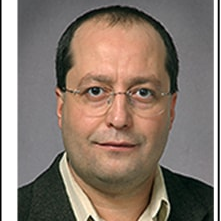Materials for Nano/Microelectronic Packaging Applications
A special issue of Materials (ISSN 1996-1944).
Deadline for manuscript submissions: closed (28 February 2018) | Viewed by 18942
Special Issue Editor
Interests: nano and micro-electro-mechanical systems (N/MEMS) devices; sensors; harvesters and actuators; quantum electronic solids; nano/micro-joining; nano-plasmonic
Special Issues, Collections and Topics in MDPI journals
Special Issue Information
Dear Colleagues,
Nano and Micro-Electro-Mechanical Systems (N/MEMS) devices applies to all types of miniaturized devices that are fabricated from silicon- and polymer-based materials using techniques derived from the nano/microelectronics industry. These techniques include isotropic and anisotropic etching, various thin film deposition methods, bonding, masking, and doping techniques employed in integrated circuit (IC) manufacturing.
Integration, packaging and full system feedback of N/MEMS devices are current bottlenecks. For example, the detailed function of a N/MEMS chip is critical to the design of the package, and cost effective packaging and robust reliability are two critical factors for successful commercialization of a N/MEMS device.
This Special Issue aims to introduce contemporary and new generation materials for “Nano/Microelectronic Packaging Applications. Topics include, but are not limited, to:
-Quantum electronic materials as interconnectors in nano/microelectronic industry
-2D (two-dimensional) and transition metal dichalcogenides (TMD) for electronic packaging
-Testing methods and reliability of electronic packaging materials
-Electronic interconnection in biological systems devices (e.g.) biosensors
-Materials for optoelectronic and electro-magnetic devices packaging
-Materials for high-density electronic packaging and interconnection
-Structure–property relations of materials in electronic packing and interconnections
-New materials for electronic packaging
-Computational studies for selecting materials for electronic packing
Prof. Mustafa Yavuz
Guest Editor
Manuscript Submission Information
Manuscripts should be submitted online at www.mdpi.com by registering and logging in to this website. Once you are registered, click here to go to the submission form. Manuscripts can be submitted until the deadline. All submissions that pass pre-check are peer-reviewed. Accepted papers will be published continuously in the journal (as soon as accepted) and will be listed together on the special issue website. Research articles, review articles as well as short communications are invited. For planned papers, a title and short abstract (about 100 words) can be sent to the Editorial Office for announcement on this website.
Submitted manuscripts should not have been published previously, nor be under consideration for publication elsewhere (except conference proceedings papers). All manuscripts are thoroughly refereed through a single-blind peer-review process. A guide for authors and other relevant information for submission of manuscripts is available on the Instructions for Authors page. Materials is an international peer-reviewed open access semimonthly journal published by MDPI.
Please visit the Instructions for Authors page before submitting a manuscript. The Article Processing Charge (APC) for publication in this open access journal is 2600 CHF (Swiss Francs). Submitted papers should be well formatted and use good English. Authors may use MDPI's English editing service prior to publication or during author revisions.
Keywords
- Quantum electronic solids
- Electronic packaging materials
- Integration, packaging and full system feedback of N/MEMS devices
- Optoelectronic and electro-magnetic packaging
- High-density electronic packaging and interconnection
- Structure–property relations of materials in electronic packing
- Testing methods and reliability of electronic packaging materials
- 2D and TMD materials for electronic packaging
- Nano- and Micro-joining






